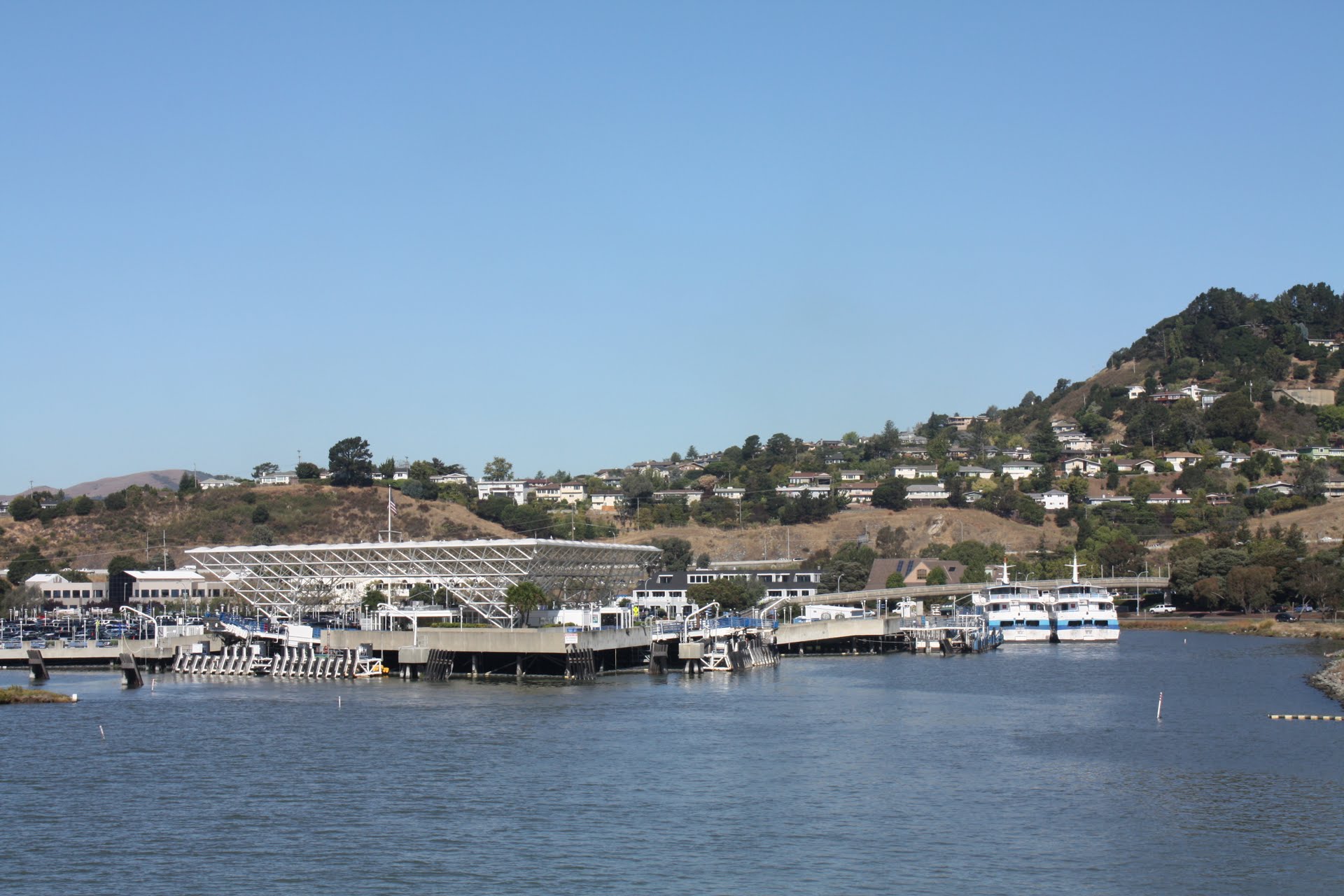 Larkspur has a parking problem. More accurately, it has an access problem, one that can be solved by harnessing extant parking and by running a shuttle service. These are ultimately stop-gap measures. If Golden Gate Transit is serious about turning its ferry service into the workhorse it could be, it needs to start thinking beyond the park and ride model to ferry-oriented development.
Larkspur has a parking problem. More accurately, it has an access problem, one that can be solved by harnessing extant parking and by running a shuttle service. These are ultimately stop-gap measures. If Golden Gate Transit is serious about turning its ferry service into the workhorse it could be, it needs to start thinking beyond the park and ride model to ferry-oriented development.
The financial case
Transit-oriented development could make GGT a mountain of money. Though as a public agency GGT isn’t necessarily supposed to make money, profits mean more stable finances and stronger service.
From a strictly real estate perspective, GGT could earn $2-4 million per year by leasing its parking lot to development, assuming fairly low-rise (four story) development to match the height of existing buildings around the neighborhood. If GGT wants to build on the land itself rather than lease to a developer, it could reap the full value of its land. If developed like the draft Larkspur Station Area Plan, that means roughly $7.8 million in gross revenue from residences and retail. If GGT adds 50,000 square feet of office space, it could quadruple its income to $33.8 million.*
Because GGT land isn’t taxable thanks to its status as a government agency, Larkspur should encourage any residential development on the terminal parking lot to have small units like efficiencies, studios, and one-bedrooms. Childless households attracted to small units are less of a burden on city services, so the lack of parcel and property taxes won’t be as great a problem. Sales taxes would still come in from these households, though, so Larkspur would get some boost from GGT land use changes.
If private property owners follow through on the SMART Station Area Plan, of course, the City of Larkspur would be able to reap the full benefits of more intense use.
The access case
What prompts this analysis, of course, is the current lack of access to the ferry, not simple financial concerns. GGT thinks Larkspur ferry ridership is limited by the ability of people to get to and from the terminal and wants to break through that barrier.
Transit-oriented development of the whole neighborhood of the sort called for in the draft Station Area Plan will provide a way to break through this barrier. More people will be able to walk to the ferry terminal, and that’s a good thing. The existing residents of Larkspur Landing seem to be heavy users of the ferry, with 0.6 weekday trips per person.** We don't know how many people may eventually live where the parking lot now stands, but there's every reason to believe they will be just as apt to use the ferry.
Residential TOD is a good way to build in riders who won’t be deterred by the lack of parking. With SMART or a bus shuttle, there’s a good chance GGT could attract car-free or car-light residents, which would boost other transit ridership.
Office TOD could be even more valuable and attract the reverse-commuter. There’s a glut of counter-commute capacity from San Francisco. Attracting San Franciscans to the ferry would allow it to make the most of its existing resources and are an easy way to boost farebox recovery.
Getting these reverse-commuters will require some skill on the part of developers. Only 2 percent of Marin’s jobs are held by transit-commuting San Franciscans. There aren’t many San Francisco commuters to begin with, and most of them are driving, not taking transit. A combination of marketing office space to San Francisco businesses, free transfers to Muni and BART, and discounted fares for employees of Larkspur Landing businesses could help boost the number of reverse commuters.
Any redevelopment plans need to be carefully evaluated. The Larkspur parking lot is on old marshland that will be very expensive to redevelop. GGT land isn’t taxable, so developments’ strain on city and county services needs to be weighed carefully. Neighbors and businesses need buy-in to improve the area. And traffic, surface transit, and parking are all thorny problems that need to be addressed (and are bigger issues than can be addressed here).
Then again, Larkspur Ferry Terminal may not have the capacity for more ridership. There’s already an overflow bus for morning commuters, and GGT is considering adding another morning ferry to cope with demand. In our fourth and final installment, we’ll examine the ferry terminal’s capacity constraints and what to do about them.
*Larkspur offices lease for about $43 per square foot, and apartments in Marin rent for about $2,000 per month. Retail rents for about $20 per square foot.
**At the moment, 25 percent of ferry riders walk to the ferry. It’s very likely that most of these riders live in the nearby homes north of Larkspur Landing Circle, as those are the only homes within walking distance.